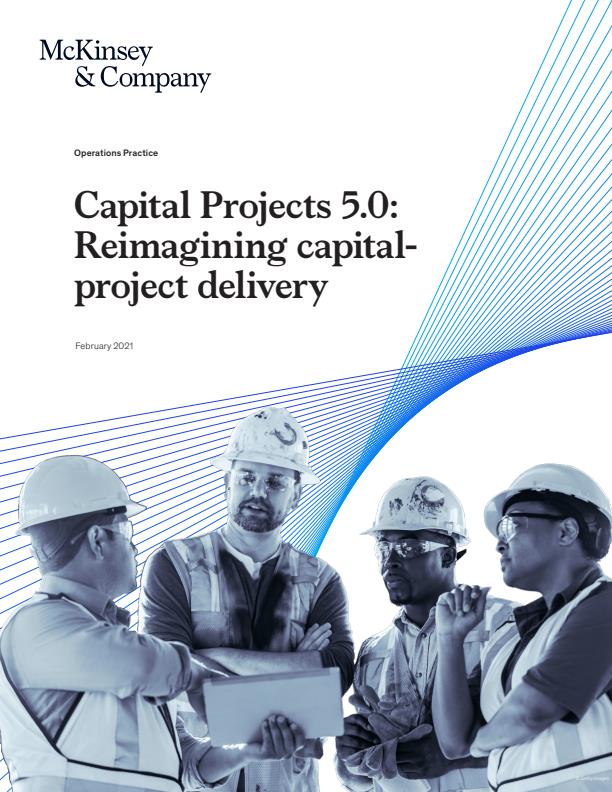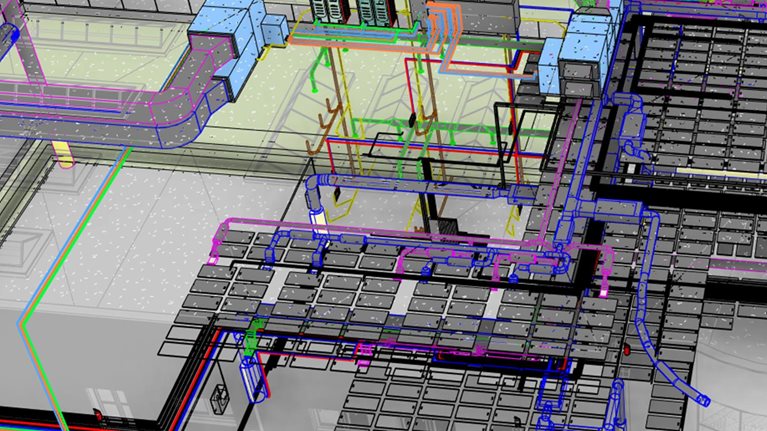Projects 5.0 is a new model for the delivery of large capital projects in heavy industry. In this report, we make the case for a radically different approach in the sector, and outline the six fundamental changes that could transform project-delivery performance.
Cost and performance benchmarks in many industries have been redefined in recent years, as incumbents and new market entrants alike adopt new technologies or unconventional operating models. In space flight, for example, the cost of putting a payload into orbit has fallen by 75 percent.
Applying the same underlying principles to large capital projects in heavy industries could achieve a similar step change in performance, with the potential to reduce actual project cost and time by 30 to 50 percent, more than doubling project returns. Yet the sector has struggled to achieve even moderate rates of productivity improvement or to deliver projects on time; a recent survey of senior project executives found that on average, projects overrun their budgets and schedules by 30 to 45 percent.
The coronavirus crisis has further accelerated the urgency for change. Lockdowns, labor shortages, and supply-chain disruptions have set construction programs back by months. The prospect of a long, uncertain period of recovery is forcing companies to rethink future project plans.
At the root of the sector’s unenviable record is a project-delivery model that has remained largely unchanged for a quarter of a century or more. It is a model plagued by issues and inefficiencies: a lack of integrated systems thinking; prioritizing short-term cost management over long-term outcomes; poor communication between stakeholders; and bespoke projects and rigid planning systems that struggle to identify or adapt to changing demands.
Industry leaders are experimenting with a growing list of new technologies and processes, from digital twins to artificial intelligence– (AI–) enabled planning algorithms. A real transformation of capital-project delivery will require more than targeted interventions, however. At best, narrowly focused tools and technologies can address only a small part of the overall value at stake. At worst, poor technology and process deployment can end up adding unnecessary complexity and confusion to a project.
Would you like to learn more about our Operations Practice?
In this report, we make the case for Projects 5.0, a clean-sheet approach to capital-project delivery. Projects 5.0 is so named because it builds on the Fourth Industrial Revolution’s advances, which introduced automation, machine learning, smart technologies, and the Internet of Things into conventional manufacturing and industrial practices. Incorporating these techniques into a broader set of changes—including stronger partnership networks, greater agility and flexibility, and thoughtful future-proofing—promises to unlock capital projects’ full potential to deliver lasting value.
We have examined the approaches of multiple leading companies, in sectors from energy to software development, to see how they have addressed similar challenges in the delivery of complex projects. Studying the most successful elements of their models allowed us to identify six design principles that could act as building blocks for a better approach:
- An ecosystem of partners that collaborates across multiple projects to maximize end-to-end value.
- Industrialization and innovation, with the adoption of standard processes for repeated tasks, while challenging traditional ways of working to drive productivity.
- Agility, flexibility, and resilience, combined with a stable backbone of disciplined processes, progress monitoring, and management.
- Sustained capability building with a redesigned “people supply chain” that ensures companies acquire, develop, and retain the labor and talent they need.
- A data-driven operating model including a robust digital architecture, shared by all stakeholders in the ecosystem.
- Future-proofing of projects, with metrics and incentives that consider future opportunities and risks, and which promote innovation for long-term commercial and environmental sustainability.
In a survey we conducted in September, 2020, more than 300 senior decision-makers from across the capital-projects value chain estimated that applying these principles at scale could reduce both cost and delivery time by 30 to 40 percent.
More than 75 percent of respondents said that a significant shift in project delivery model was part of their organization’s agenda—but 85 percent admitted that their organizations have not scaled either the design or implementation of actions to address any of the six principles.

The next normal in construction: How disruption is reshaping the world’s largest ecosystem
The transition to the Projects 5.0 model entails a fundamental shift in the way businesses approach and execute capital projects. That will require senior leaders to establish bold aspirations and communicate a clear call to action for their organizations. They will want to move fast to capture quick wins and plan the implementation of longer-term interventions. And the final prerequisite: a willingness to invest real resources to drive change on the ground.
Projects 5.0 represents a significant break from the sector’s long-established delivery model. In this effort, capital-projects players will want to draw heavily on insights and expertise from other sectors. For ambitious players in the sector, choosing the right partners to help design and implement their transformation will be critical in unlocking the value at stake.



